 W
WAllen's squirrel is a tree squirrel in the genus Sciurus endemic to northern Mexico. It has no subspecies.
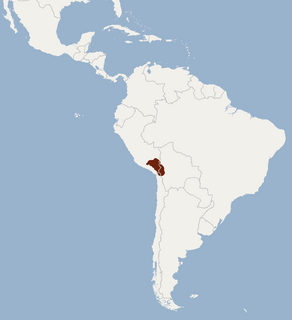 W
WThe Altiplano chinchilla mouse or achallo is a species of rodent in the family Cricetidae. It is the only species in the genus Chinchillula. It is found in Argentina, Bolivia, Chile, and Peru.
 W
WThe Anastasia Island beach mouse is a subspecies of the oldfield mouse of the southeastern United States. It occurs in the sand dunes of Florida and Alabama beaches. It has been classified by the United States Fish and Wildlife Service as an endangered species due to the specificity of its habitat and the natural and human-induced destruction thereof.
 W
WThe Angolan fruit bat or Angolan rousette is a species of megabat in the family Pteropodidae. It is found in Angola, Burundi, Cameroon, Central African Republic, Republic of Congo, Democratic Republic of Congo, Kenya, Nigeria, Rwanda, Sudan, Tanzania, Uganda, and Zambia. Its natural habitats are subtropical or tropical moist lowland forest, moist savanna, and rocky areas.
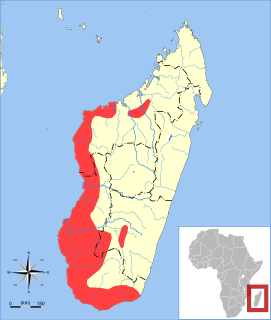 W
WThe bastard big-footed mouse is a species of rodent in the family Nesomyidae. It is found only in Madagascar. Macrotarsomys bastardi is the smallest-bodied of the three species recognized within the genus Macrotarsomys. Two subspecies have been recognized however 2004 studies did not find consistent differences between the subspecies and recommended "subspecific epithets be abandoned for this species".
 W
WThe Bornean water shrew is a species of mammal in the family Soricidae. It is endemic to Malaysia. Its natural habitat is rivers. It is threatened by habitat loss.
 W
WBottego's shrew is a species of mammal in the family Soricidae. It is found 1,750 metres (5,740 ft) above sea level in Ethiopia and possibly Kenya particularly northeast of Lake Turkana and one in Kenya from Marsabit.
 W
WThe Cameroon scaly-tail, also referred to as the Cameroon anomalure, flightless anomalure or flightless scaly-tail, is a rodent species endemic to West Central Africa. The scientific literature has never reported observations of live individuals. The taxonomic classification of the species has been subject to recent revision.
 W
WThe common big-eared bat is a bat species from South and Central America. It is a neotropical leaf-nosed bat.
 W
WThe Corsican hare, also known as the Apennine hare or Italian hare, is a species of hare found in southern and central Italy and Corsica.
 W
WThe François' langur, also known as the Francois' leaf monkey, Tonkin leaf monkey, or white side-burned black langur is a species of lutung and the type species of its species group. It is one of the least studied of the species belonging to the Colobinae subfamily.
 W
WThe greater dwarf shrew is a species of mammal in the family Soricidae. It is found in Angola, Botswana, Democratic Republic of the Congo, Kenya, Malawi, Namibia, Tanzania, Zambia, and Zimbabwe. Its natural habitats are subtropical or tropical dry forests and dry savanna. It is present in several protected areas, including the Kruger National Park. The main threat to shrews is the loss or degradation of moist, productive areas such as wetlands and rank grasslands within suitable habitat.
 W
WThe hairy-footed dunnart is a dunnart that has silver hairs on the soles of it hind feet accompanied by long hair on the side of its sole. It is an Australian marsupial similar to the Ooldea dunnart, with its upper body yellow-brown and lower body white in colour. Its total length is 147–180 mm; its average body length is 72–85 mm with a tail of 75–95 mm. Its ear length is 15 mm. This dasyurid weighs between 13 and 19 grams. Its tail is thin and pinkish white, can be thickened at the base.
 W
WThe Hartmann's mountain zebra is a subspecies of the mountain zebra found in far south-western Angola and western Namibia. Hartmann's mountain zebras prefer to live in small groups of 7-12 individuals. They are agile climbers and are able to live in arid conditions and steep mountainous country.
 W
WThe Jamaican flower bat is a critically endangered species of bat in the family Phyllostomidae. It is endemic to Jamaica.
 W
WThe Junín red squirrel is a species of squirrel from Peru and Ecuador.
 W
WThe Kinabalu shrew is a species in the family Soricidae. It is endemic to the mountain Mount Kinabalu on Borneo.
 W
WThe long-eared flying mouse or long-eared scaly-tailed flying squirrel, is a species of flying mouse from western and central Africa. It is not actually a squirrel, nor a mouse, though it is a rodent. Not much is known about them because they are very hard to keep alive in captivity.
 W
WThe long-haired rat, is a species of rodent in the family Muridae which is native to Australia. The long-haired rat is well known for its population eruptions over vast areas of Australia which is the basis of its alternative common name, the plague rat. Most of the research on the long-haired rat has been conducted during times of massive population fluctuations and therefore little is known about their biology in a non-eruptive period.
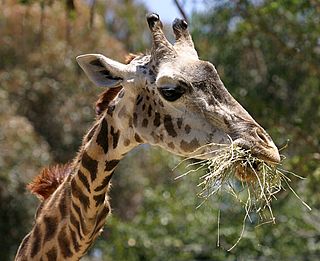 W
WThe Masai giraffe, also spelled Maasai giraffe, also called Kilimanjaro giraffe, is the largest subspecies of giraffe. It is native to East Africa. The Masai giraffe can be found in central and southern Kenya and in Tanzania. It has distinctive, irregular, jagged, star-like blotches that extend to the hooves. A median forehead lump is usually present in bulls.
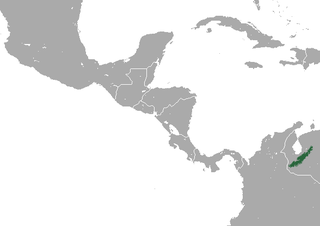 W
WThe Merida small-eared shrew is a species of shrew that is endemic to Venezuela.
 W
WThe Middle East blind mole-rat or Israel/Palestine mole-rat is a species of rodent in the family Spalacidae.
 W
WMiller's long-tongued bat is a bat species from northern South America and the Windward Islands of the Lesser Antilles. It is found in northern Brazil, Venezuela, Colombia, Guyana, Trinidad and Tobago, Grenada, the Netherlands Antilles and the U.S. Virgin Islands.
 W
WThe mountain cuscus is a species of marsupial in the family Phalangeridae found in West Papua, Indonesia and Papua New Guinea.
 W
WThe bare-tailed woolly mouse opossum or short-furred woolly mouse opossum is a South American marsupial of the family Didelphidae. Its range includes Brazil, Colombia, Ecuador, Peru, and Bolivia. It is found in tropical rainforest in the westernmost portion of the Amazon Basin and the eastern foothills of the Andes, at elevations up to 1634 m. It was formerly assigned to the genus Micoureus, which was made a subgenus of Marmosa in 2009.
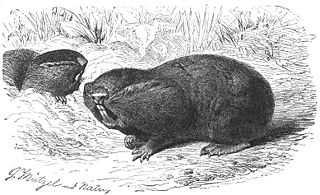 W
WNehring's blind mole-rat is a species of rodent in the family Spalacidae. It is found in Armenia, Georgia, and Turkey.
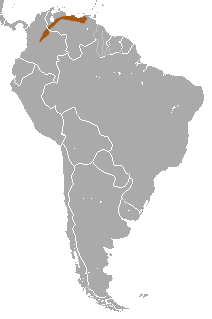 W
WThe northern gracile opossum is a species of opossum in the family Didelphidae. It is found in Colombia and Venezuela. Its natural habitat is subtropical or tropical moist lowland forests.
 W
WThe Olympic marmot is a rodent in the squirrel family, Sciuridae; it occurs only in the U.S. state of Washington, on the middle elevations of the Olympic Peninsula. The closest relatives of this species are the hoary marmot and the Vancouver Island marmot. In 2009, it was declared the official endemic mammal of Washington.
 W
WOryzomys nelsoni is an extinct rodent of María Madre Island, Nayarit, Mexico. Within the genus Oryzomys of the family Cricetidae, it may have been most closely related to the mainland species O. albiventer. Since its first description in 1898, most authors have regarded it as a distinct species, but it has also been classified as a mere subspecies of the marsh rice rat (O. palustris).
 W
WThe Pacific pocket mouse, Perognathus longimembris pacificus, is endemic to California. It lives in sandy coastal soils of the coastal sage scrub ecoregion. It eats seeds and some insects. It was believed to be extinct until 1993, when a small population was discovered. It is now a federally listed Endangered animal species.
 W
WThe peninsular myotis is a species of vesper bat. It is endemic to northwestern Mexico, found only within Baja California Sur state on the southern Baja California Peninsula. Its habitats include the southern Peninsular Ranges and deserts.
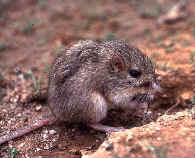 W
WThe Sinaloan pocket mouse is one of 17 species of pocket mice in the genus Chaetodipus. Two subspecies of C. pernix are recognized, C. p. pernix and C. p. rostratus, all are endemic to Mexico.
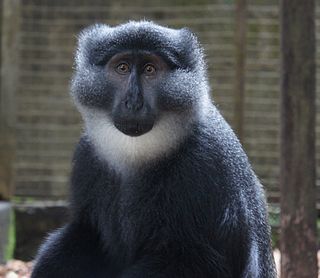 W
WThe Preuss's monkey, also known as Preuss's guenon, is a diurnal primate that lives terrestrially in mountainous forests of eastern Nigeria, western Cameroon and Bioko in Equatorial Guinea. It was formerly classified as a subspecies of the L'Hoest's monkey.
 W
WRichmond's squirrel is a poorly known tree squirrel in the genus Sciurus endemic to Nicaragua, which is likely a synonym of the Red-tailed squirrel. It is locally known as the ardilla del rama.
 W
WRidley's bat is a species of vesper bat. It is found in Indonesia and Malaysia.
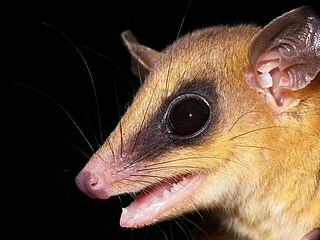 W
WRobinson's mouse opossum is a species of opossum in the family Didelphidae. It is found in Belize, Colombia, Ecuador, Grenada, Honduras, Panama, Peru, Trinidad and Tobago, and Venezuela. Despite resembling certain primates, it is related to opossums.
 W
WRothschild's cuscus, also called the Obi Island cuscus, is a species of marsupial in the family Phalangeridae. It is endemic to the islands of Obi, Bisa and Obilatu in the Obi Islands of Maluku province, Indonesia.
 W
WThe family Caenolestidae contains the seven surviving species of shrew opossum: small, shrew-like marsupials that are confined to the Andes mountains of South America. The order is thought to have diverged from the ancestral marsupial line very early. They were once included in the superorder but it is now known that Ameridelphia is paraphyletic, having given rise to Australidelphia, and thus could be considered an evolutionary grade. Genetic studies indicate that they are the second most basal order of marsupials, after the didelphimorphs. As recently as 20 million years ago, at least seven genera were in South America. Today, just three genera remain. They live in inaccessible forest and grassland regions of the High Andes.
 W
WThe Sitka deer or Sitka black-tailed deer, is a subspecies of mule deer, similar to the Columbian black-tailed subspecies. Their name originates from Sitka, Alaska, and it is not to be confused with the similarly named sika deer. Weighing in on average between 48 and 90 kg, Sitka deer are characteristically smaller than other subspecies of mule deer. Reddish-brown in the summer, their coats darken to a gray-brown in mid- to late August. They are also good swimmers, and can occasionally be seen crossing deep channels between islands. Their average lifespan is about 10 years, but a few are known to have attained an age of 15.
 W
WThe pygmy spotted skunk is a species of mammal in the family Mephitidae. It is endemic to Mexico.
 W
WThe Talaud bear cuscus is a species of marsupial in the family Phalangeridae. It is endemic to Salibabu Island in the Talaud Islands, Indonesia. Its natural habitat is subtropical or tropical dry forests. The species is considered Critically Endangered, with a small population size and heavy hunting pressure on both islands where it occurs, as well as continued habitat degradation.
 W
WThe Tres Marias raccoon is a subspecies of the common raccoon endemic on the two main islands of the Islas Marías, an archipelago off the western coast of the Mexican state of Nayarit. Although sometimes considered to be a valid species, the Tres Marias raccoon is now regarded to be a subspecies of the common raccoon, introduced to the Islas Marías in the recent past. It is slightly larger than the common raccoon and has a distinctive angular skull. There are fewer than 250 mature individuals on the islands, they are hunted by the islanders and the International Union for Conservation of Nature has rated their conservation status as being "endangered".
 W
WThe Turkish hamster, Mesocricetus brandti, also referred to as Brandt's hamster, Azerbaijani hamster, or avurtlak, is a species of hamster native to Turkey, Armenia and other surrounding nations. The Turkish hamster, first catalogued in 1878, is a fairly close relative of the Syrian or golden hamster, though far less is known about it, and it is rarely kept as a pet. The population of the Turkish hamster is said to be declining in the wild, yet this hamster is often used in laboratory testing. Turkish hamsters have lifespans of about two years and are solitary, nocturnal animals, which practice hibernation. They are reported to be more aggressive than other members of the family Cricetidae. They are tan and dark, sandy brown in color. Like all hamsters, the Turkish hamster has cheek pouches that allow it to carry large amounts of food at one time.
 W
WThe West African giraffe, Niger giraffe or Nigerien giraffe, is a subspecies of the giraffe distinguished by its light colored spots, which is found in the Sahel regions of West Africa.
 W
WThe western dwarf squirrel is a small tree squirrel in the genus Microsciurus and tribe Sciurini found in Colombia, Ecuador, and Panama.
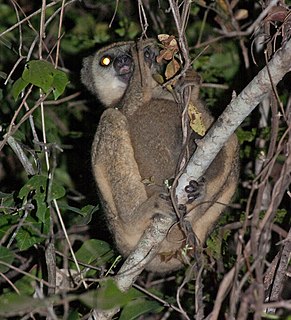 W
WThe western woolly lemur or western avahi is a species of woolly lemur native to western Madagascar, where they live in dry deciduous forests. These nocturnal animals weigh 0.7-0.9 kg. It is a folivorous species.
 W
WWhitaker's shrew is a species of mammal in the family Soricidae. It is found in Western Sahara, Algeria, Morocco, Tunisia. Its natural habitats are subtropical or tropical dry shrubland, rocky and sandy coasts. It is a fairly common species and the International Union for Conservation of Nature has rated its conservation status as being of "least concern".
 W
WThe wood sprite gracile opossum is a mammal. It is a species of opossum in the family Didelphidae. It is found in Colombia and Venezuela. Its natural habitat is subtropical or tropical moist lowland forests. It is threatened by habitat loss.